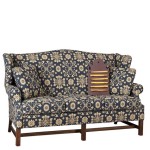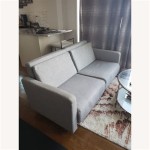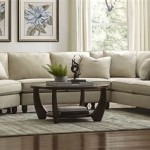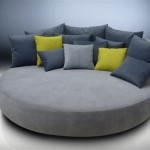Apt Size Sofa: Finding the Perfect Fit for Your Space
Apartment living often presents unique challenges, particularly when it comes to furnishing. Limited space requires careful consideration of each piece, especially a central element like a sofa. Choosing the right sofa size for an apartment involves a delicate balance between comfort, functionality, and maximizing available space. This article explores the key factors to consider when selecting an apt size sofa.
Measuring the Space: Before browsing sofa options, thoroughly measure the living area. Note the length and width of the room, paying particular attention to the wall space designated for the sofa. Consider other furniture pieces in the room and how they will interact with the sofa's placement. Account for walkways and ensure enough space for comfortable movement around the furniture. Accurately measuring the available space is the foundational step in choosing the right sofa size.
Sofa Dimensions: Sofas come in a wide range of sizes, from compact loveseats to sprawling sectionals. Understanding the standard sofa dimensions will help narrow down the choices. Measure the depth, width, and height of potential sofas. The depth, often overlooked, is crucial for comfortable seating and impacts how much floor space the sofa occupies. Consider ceiling height when selecting a sofa with a high back or prominent features. These dimensions must be compared with the room measurements to ensure a proper fit.
Apartment Layout: The layout of the apartment plays a significant role in determining the appropriate sofa size. A long, narrow living room may benefit from a longer, slimmer sofa, while a more square-shaped room could accommodate a wider, more traditional style. Consider the placement of doorways, windows, and architectural features. The sofa's placement should enhance the flow of the room and not obstruct pathways or views.
Lifestyle and Needs: Individual lifestyle and needs should influence sofa selection. A studio apartment serving as a primary living space might require a sofa bed for guests. A small apartment occupied by a single individual might be well-suited to a loveseat or a compact sofa. Consider the primary use of the sofa, whether for relaxation, entertaining, or a combination of both. This helps determine the appropriate size and style.
Sofa Styles for Small Spaces: Specific sofa styles are particularly well-suited to smaller spaces. Loveseats, typically designed for two people, offer a compact footprint. Sectional sofas, while often associated with larger rooms, can be configured to fit smaller spaces efficiently, maximizing seating capacity. Consider apartment-sized sofas, specifically designed for smaller living areas, often featuring streamlined designs and compact dimensions. Futons provide versatile seating and sleeping options, ideal for multi-functional spaces.
Visual Impact and Scale: While physical dimensions are crucial, the visual impact of the sofa should not be overlooked. A bulky, oversized sofa can overwhelm a small room, even if it technically fits. Opt for sofas with a lighter visual presence, achieved through features like raised legs or a slimmer profile. Consider the sofa's color and fabric. Lighter colors can make a space feel larger, while darker colors can create a more intimate atmosphere.
Material and Construction: The materials and construction of the sofa contribute to its overall size and feel. Bulky arms and thick cushioning can add significant visual weight, making the sofa appear larger than its actual dimensions. Consider sofas with slimmer arms and a more tailored profile for a less imposing presence. The type of fabric also plays a role in the perceived size. A textured fabric can make a sofa feel larger, while a smooth fabric can create a more streamlined appearance.
Navigating Tight Spaces: Getting a new sofa into a small apartment can present logistical challenges. Measure doorways, hallways, and stairwells to ensure the sofa can be maneuvered into the designated space. Consider sofas that can be disassembled for easier transport and assembly. Communicate these measurements to delivery personnel to avoid potential issues on delivery day. Some retailers offer delivery services specifically designed for tight spaces.
Creating an Illusion of Space: Strategic placement and styling can create an illusion of more space. Positioning the sofa away from the wall, if space allows, can make the room feel larger. Using mirrors strategically can also enhance the sense of spaciousness. Choosing furniture with legs rather than skirted bottoms can create a sense of visual lightness and airiness, making the room appear less cluttered.
Testing and Evaluating: Whenever possible, test the sofa in person before purchasing. Sit on it, evaluate its comfort, and visualize it in the apartment setting. Consider bringing a tape measure and marking out the sofa's dimensions on the floor to get a better sense of how it will fit in the room. Examine the sofa's construction and materials up close to ensure quality and durability. This hands-on evaluation is invaluable in making an informed decision.
Budget Considerations: Apartment-sized sofas are available at various price points. Establish a budget before beginning the search to narrow down the options. Prioritize quality and comfort, but be mindful of the overall cost. Consider factors like fabric durability, frame construction, and cushion quality. Investing in a well-made sofa, even at a higher price point, can provide long-term value and comfort.

10 Best Apartment Sized Sofas For Every Style 2024

Axis Bench Apartment Sofa Crate Barrel

8006 Apartment Living Room Sofa Office Free Pillows More Size Furniture Home Sofas On Carou

Apartment Sofa Vs Regular Knowing Couch Sizes Apt2b

Petra Apartment Size Sofa La Z Boy
These 11 Small Sectional Sofas For Apartments

Lounge Leather Apartment Sofa Reviews Crate Barrel

Kirby Apartment Size Sofa La Z Boy

Amanda Apartment Size Sofa

Amanda Apartment Size Sofa Collection Francis Furniture Of Troy Ohio








